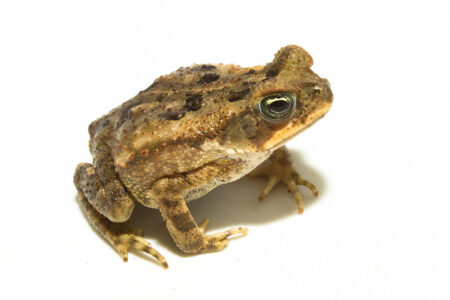The Craft of Poisoning: Learning to Live in Toxic Worlds
I am currently working on a short book that will be published as part of the Cambridge Elements: Environmental Humanities series in 2026. A description of the project is below. Please get in touch with any questions.
Since their introduction in 1935, cane toads have been making their way across the top half of the Australian continent. As they’ve moved, they’ve left a wave of death in their wake, animals poisoned by the unfamiliar toxins these toads carry. All efforts to eradicate toads, or even slow their advance, have failed. In recent years, however, a new set of experimental approaches to the ‘cane toad problem’ have begun to emerge. In contrast to all of the lethal management options deployed to date, these new approaches centre on large scale efforts to teach native animals—including monitor lizards, quolls, crocodiles, and others—not to eat toads through a ‘conditioned taste aversion’ that is produced with the use of nauseating toxins. So far, the approach seems to be highly successful.
This Element explores the history, ethics, and emergent possibilities of these multispecies pedagogical experiments. It asks how the toxic substances that are deployed by both toads and scientists open up new opportunities for learning, for becoming differently together, for reshaping ecosystems and shared lives, while also carrying with them significant, and often mortal, dangers. Ultimately, the text aims to describe a complex space of biodiversity conservation centred on the cultivation of a thoroughly imperfect and compromised, but hopeful, ‘craft of poisoning’ that might enable cane toads and others to co-exist.
In taking up these topics this Element contributes to discussions across several major themes in the environmental humanities, drawing together work on toxicity, death/extinction, philosophical ethology and animal learning/cognition, and multispecies coexistence and conservation in the context of the dramatically modified and rapidly changing landscapes that characterise the Anthropocene. While the empirical focus and narrative thread of the text centre on cane toads in Australia, the analysis travels through a variety of fascinating topics that will be of broad general interest including the evolution of toxic animals and their place in various ecosystems (Ch1); changing understandings of animal intelligence and learning, including the discovery of ‘conditioned taste aversion’ and its close association with military and nuclear research (Ch2); and emerging research on behaviourally mediated indirect effects and the potential for animals to learn to live in new ways that ultimately reshape the contours of their landscapes (Ch3). In bringing these threads together, the Element ultimately aims to open up new resources and possibilities for multispecies cohabitation in difficult times.
—
Cane toad photo by Brian Gratwicke (CC BY 2.0)
